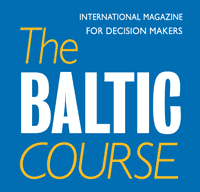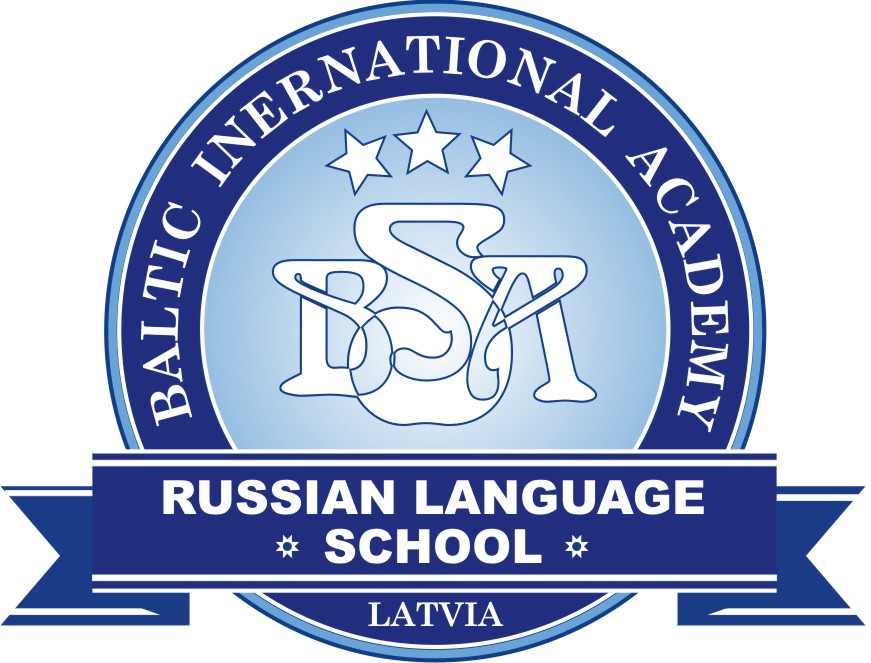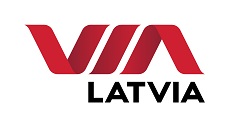Baltic States – CIS, Energy, EU – Baltic States, Gas, Latvia, Transport
International Internet Magazine. Baltic States news & analytics
Saturday, 05.07.2025, 08:01
The Nord Stream “Beavers”
 Print version
Print versionSoon after began the pipeline construction activities in Germany – on the East-West side of the Baltic Sea. First pipes will be laid on the seabed in the Bay of Greiswald in June, 2010 by the special pipelay vessel Castoro-10.
The Nord Stream Company has invited the European media representatives to acquaint themselves with preparatory works on the Castoro-10 vessel.
Flying over the Europe
 |
|---|
I was at Riga Airport at about 5:00 a.m. on May 28. Had I taken a direct flight to Amsterdam I would have missed the meeting, so I opted for the connection flight via Copenhagen.
The early morning flights over the Europe are always pleasant; the skies are usually clear and the visibility – excellent. From the bird’s eye view I saw ships sailing the Baltic Sea, green fields taking various shapes, as well as a bridge connecting Sweden and Copenhagen.
Having landed In Copenhagen I took a connecting SAS flight to Amsterdam.
It is indeed easy to recognize the Netherlands from the aircraft – there are many channels, wind turbines and authentic windmills covering the land. The first thing I recalled was the Czar Peter the Great’s trip to Holland, where he learned the shipbuilding craft. Having taken his knowledge back home, the Russian Navy began to develop.
The aircraft landed at Schiphol Airport where I had to change to a local train. We were passing numerous channels, neat old houses, bicycles and interesting constructions. A large number of construction sites in Holland is an excellent indicator of the country's healthy economy. Suddenly, the city of Rotterdam appeared as we approached the Central Station. A taxi took me to the Inntel Hotel where the Nord Stream presentation had already begun. It was held by Frank Dudley, Nord Stream Manager of Public Relations and Chris Meneghini, Business Development Manager of the Saipem Company, which is the member of the famous Eni Group. Journalists from Germany, Sweden, Finland, the Netherlands, Lithuania, Denmark, Switzerland and other countries were invited to the meeting. I was the only journalist representing Latvian and Russian language press.
Frank and Chris provided a detailed insight into the offshore pipeline construction technology and presented many illustrations.
Rotterdam – an Industrial City
 |
|---|
I must say a few words about the city of Rotterdam. First of all, it is the largest seaport in Europe. The Port of Rotterdam stretches over a distance of 40 km and consists of numerous wharves and port facilities. A cluster of harbour cranes covers both sides of the river Meuse that flows into the North Sea.
I have recalled the arguments of the experts in Riga saying that the Port of Riga is located 17 km from the mouth of the Daugava River and should certainly be moved closer to the sea. Everything is in motion in the Port of Rotterdam – constantly moving cranes, scurrying loaders, thousands of containers, arriving and departing freight trains and ships. Rotterdam is an Industrial City – the rhythm of work is felt throughout the city life.
During the World War II, Rotterdam was virtually destroyed by Nazi aviation, and the historical city center suffered particularly severe damage.
The most destructive bombing attack on the city was on May 14, 1940, Rotterdam was nearly completely ruined. During the retreat in 1944, Germans blew up the Port of Rotterdam.
Nowadays, Rotterdam is a new post-war city with wide streets, bicycle lanes, modern office buildings, hotels, banks, large companies, and bridges over the Meuse, as well as tall standing skyscrapers, green parks and gardens. Walking around the city I have noticed only a few old buildings that actually survived the WWII bombings. The only place resembling the old days is the Maritime Museum’s Harbor, where dozens of old ships and port machinery are exhibited. You may see old hydraulic and steam cranes there, as well as forklifts, harbour locomotives, tugboats and different vessels that served the port life.
The Nord Stream Beavers
After the presentation, journalists were guided to the Port to see the Castoro-10 vessel. We arrived at the port office of the Saipem Company – member of the Eni Group.
Eni is a well-known Italian state company operating in the field of exploration and production of crude oil and gas all over the world. The company's assets exceed 100 billion euros. Eni owns a group of nuclear power plants and an Agip petrol station network that employs more than 72,000 people.
Eni has developed long-term and stable relationships with Gazprom – nearly all contracts on the supply of Soviet gas to Europe in the ‘60s involved the Eni Group.
Saipem has been in the business of marine production and transportation of oil for over forty years. Its fleet consists of more than 75 specialized vessels operating all seas and oceans, and Castoro-10 is among them.
Castoro in Italian means "beaver". I guess it would be difficult to find more appropriate name for this vessel.
Welcome Aboard!
When we arrived at the Saipem office, we first met the Safety officer. I have noticed that the safety aspect on the Castoro-10 and throughout the Nord Stream Project is of utmost importance. Admission to the ship is subject to strict adherence to the International Ship and Port Facility Security (ISPS) Code – the vessel’s crew and all visitors must be briefed on safety procedures. According to the safety requirements, all visitors shall wear protective clothing, footwear and have protective equipment – goggles and a helmet – while on board. Also, each of us was given a little Safety Handbook. Soon after putting on the protective clothing and being registered by the person on duty, we boarded the vessel.
 |
|---|
On board the mass media representatives were met by the Master of the Castoro-10, Giacinto Lezza. The tour began from the loading deck that has two powerful cranes with lift capacity of 100 tons each. Pipes are delivered to the pipelay vessel by the supply ships and then unloaded into the storage area, from where they are transferred to the welding line. Two 12-metre pipe joints are automatically welded together creating a 24-metre long “double joint”. All welds are subject to non-destructive testing. The double joint is welded to the end of the pipeline. The welded pipeline runs down the stinger (a frame-work of tubular parts at the stern of the vessel) into the suspended span and is lowered on the seabed.
We continued our tour to the ships bridge, a place that has all the necessary navigation and communication equipment, including monitoring of the pipelay vessel position during the pipe-laying process.
The Castoro-10 vessel’s power plant consists of eight diesel generators 4,000 hp each producing the electric current for the technological equipment. This vessel does not have its own propeller machinery, therefore is usually towed to the place of work. Propulsion and positioning of the pipelay vessel along the route is provided by eight anchors, each weighting 50 tons.
The vessel moves inside the pipeline corridor by hauling the stern anchor cables in and paying the bow anchor cables out, as if the vessel pulled itself along the route.
The control over the anchors is of great importance ensuring the precise vessel positioning and accurate pipe-laying. We were shown a designated stand on the Castoro-10 bridge, from where the position of anchors is controlled by an operator.
Another important stand on the bridge controls the tension of cables holding the suspended span when it is lowered onto the seabed. The weight of the suspended span may exceed 150 tons; therefore, the control over the pipe laying process is of a great importance to ensure the reliability and safety of the entire Project.
Prior to delivering a pipe to the welding area, its ends must be trimmed Circumferential welding is a complicated and critical procedure. At first, the welding place is heated by a gas burner, and then a drive ring for the automatic welding machine is put on the pipe end. An intert gas, argon, protects the welding area from atmospheric contamination. This welding procedure is called – electric arc welding in an argon atmosphere.
An ultrasonic testing (AUT) system examines every weld in order to detect and assess the potential defects. The examination process is carried out automatically at both welding areas – in the Double-Joint Plant and in the Main Line. Having completed the construction work, the pipeline is pressure tested to ensure its mechanical integrity. The test demonstrates the pipeline’s ability to withstand the working pressure with no losses.
The pipeline’s inner diameter is 1,153 mm with a design pressure of up to 220 bar. The pipe wall thickness varies from 27 to 41 millimetres, depending on pressure along the route. The pipes are manufactured from high-tensile steel in accordance with DNV (Det Norske Veritas, Norway) Offshore Standard OS-F 101.
The pipes are coated with an external anti-corrosion layer and covered with a concrete coating 60 to 110 millimetres to ensure the pipeline’s extra stability on the seabed. Each meter of the pipeline requires approximately one ton of concrete in order to counteract buoyancy. Each pipe joint is 12 metres long; weight of the concrete coating is 26 to 28 tons.
Nord Steam will consist of two parallel, 1,220 kilometres long pipelines, which means that more than two hundred thousand pipes will be laid onto the seabed.
Having acquainted yourself with the Nord Stream pipeline construction technology, you begin to realize what a huge challenge the participants of the project are facing. Such a large-scale project may only be developed when the international community works together.
After getting an insight into the pipe processing we went inside the vessel to to take a look at the crew’s living conditions on board.
Today, the Castoro-10 crew consists of around 140 people, but when the vessel is out on the sea and the pipe-laying process begins, the crew will increase up to 200 people. The ship’s crew is international – commanders are Italians, but among sailors and workers are Croats, Malays, Indonesians, Greeks, Turks, Filipinos, Lithuanians and Ukrainians. The personnel have four cabins at their disposal. Also, we visited a fully equipped gym, a medical centre overseen by a doctor Sergey Zinchenko from Ukraine, as well as a spacious galley managed by Italian Chief.
There was a metal plate on the wall in the galley – the ship’s construction tablet with the following inscription: "Made in Amsterdam, 1976, construction number 906”. This demonstrates the fact that already 35 years ago Europe had constructed vessels for offshore pipe laying and this technology was used for constructions of special vessels. Offshore pipelines are stretching in many seas all over the world – in the Gulf of Mexico, in the South Seas, only in the North Sea there are currently more than eleven pipelines.
The Soviet Union had constructed a lot of onshore pipelines but had no experience in the design, construction and operation of the offshore pipelines. That is why Russia appealed to the international community when the idea of the construction of the Nord Stream gas pipeline appeared. It will be the first gas pipeline via the Baltic Sea and its significance in the Europe’s energy supply is enormous. Currently, the Nord Stream project is one of the European Union’s top priorities.
The return trip to Riga via Stockholm was quite short. Landing in the Arlanda Airport was unusually precise and soft, which I think was because of the lady pilot.
Following the “Riga” “Boston” route
From Stockholm to Riga I flew by a small turboprop Dash 8Q-400. After the take-off the aircraft entered the airspace over the Baltic Sea. Through the window I was watching the sunset when suddenly a flat, blue-green shadow appeared on the sea-surface that turned out to be the Saaremaa Island. I could clearly see contours of the S?rve peninsula, Bay Luu, Kubassaare Peninsula and the Hiiumaa Island. These places are the characters of my books “Batteries Moonzund” and “Guns of Courland Coast”. Straight ahead appeared contours of the Latvian cost, and the aircraft continued its flight over the Kurzeme.
Suddenly, I realized that the aircraft was flying the same route as was taken by the torpedo bomber’s “Boston A-20” commander Guard Captain Peter Letunovsky on November 27, 1943, when he navigated the burning aircraft following the attack of the fascist heavy floating battery “Robert Muller” in the Irben Strait.
Under the wing stretched out dark, green Kurzeme – fields and hills and a narrow strip of sandy beach. Letunovsky might have used this strip as an orienting point. According to my calucation, the flight from the Irben Strait’s cost to the mouth of the Daugava River lasted twenty minutes. Undoubtedly, our aircraft was flying faster than the Letunovsky’s burning bomber, so we may assume that the “Riga – Boston” flight over Kurzeme took approximately thirty minutes.
What were the “Boston’s” crewmen thinking during that half an hour? Maybe of a peaceful sky over the Europe some day… They couldn’t have thought of a common project in the Baltic Sea implemented by Russia, Germany and the European community – a hand of friendship and cooperation will stretch from Russia’s Vyborg to Germany’s Greifswald. I believe that we must not forget those who gave their lives for the future of peace and cooperation in the Europe, and the “Riga” Boston’s” crewmen are among them.
Author’s foto








 «The Baltic Course» Is Sold and Stays in Business!
«The Baltic Course» Is Sold and Stays in Business!

